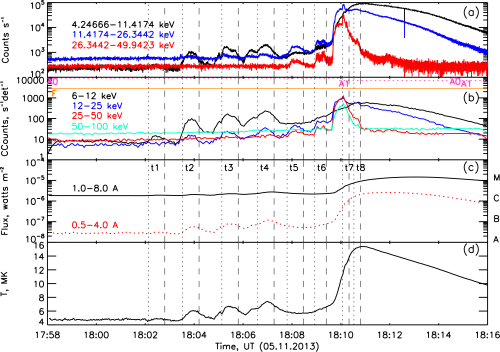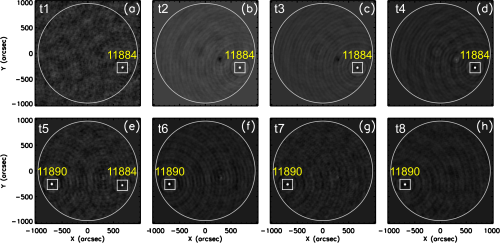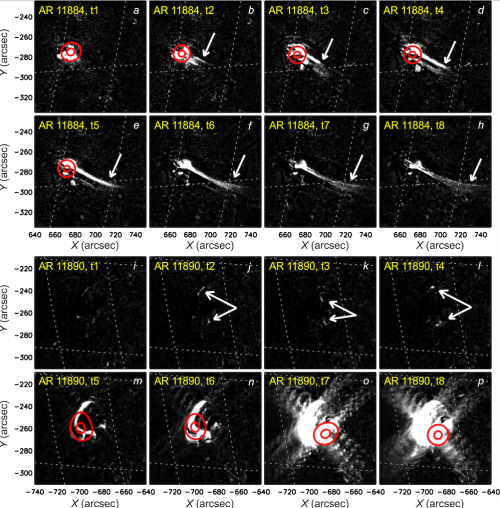When it rippled in one place and exploded in another
| Nugget | |
|---|---|
| Number: | 465 |
| 1st Author: | Ivan ZIMOVETS |
| 2nd Author: | |
| Published: | December 25, 2023 |
| Next Nugget: | TBD |
| Previous Nugget: | Solar flares: evaporation and simulation |
Introduction
A flare, as an example of a powerful phenomenon of energy release in a complex system, has analogs in with earthquakes and volcanic eruptions. Solar flares have various precursors. One important type of precursor consists of quasi-periodic fluctuations or pulsations in radiation, in particular in the microwave [Ref. 1] and soft X-ray [Refs. 2, 3] ranges. Some believe that it is even possible to predict solar flares based on the detection of such precursors. However, the situation is not as simple as it might seem. Firstly, low-amplitude pulsations are not detected before all flares, especially in the X-ray range. And even if pulsations are detected before the flare, there is still no reliable way to associate their parameters with parameters (e.g., the start time and class) of a coming flare in real time.
Sun-as-a-Star, or Imaging?
Relying on instruments without spatial resolution (which are the bulk of detectors operating in the X-ray and radio bands), it is impossible to determine unambiguously from which region at the Sun pulsations (or other precursors) might be coming. For example, [Ref. 3] showed that in a significant fraction of events, the sources of X-ray pulsations are located in other active regions than the subsequent large flares.
Here we present one vivid example of an event of this kind, for which we tried, but found no signs of a physical connection between the pulsations and the flare after them. Figure 1 gives an overview.
RHESSI observed X-ray sources of quasi-periodic pulsations (with a period P = 1.5±0.1 min), which began at about 18:02 UT on November 5, 2013, in AR 11884 in the western solar hemisphere (Figure 2). Meanwhile the sources of the main M1.0 flare SOL2013-11-05T18:08 were located in AR 11890 in the eastern hemisphere. These pulsations have been also detected with [Fermi/GBM] and [GOES/XRS], excluding the possibility of an artifact.
Could the remote pulsations (see our Nugget icon image) possibly have had a physical relationship with the flare? We can probably rule out any connection based on MHD energy coupling, (since the Alfvén velocity in the corona usually does not exceed the 1500 km/s, and indeed the oscillating region produced jets at comparable and lower velocities (Figure 3).
Thus, we conclude that there was no physical connection between preflare X-ray pulsations (and jets) and the flare that followed them. This temporal coincidence of the two phenomena probably happened by accident. Observations show that this is not so rare - tens of percent for X-ray pulsations before flares appear to occur remotely from the flaring active region.
Conclusions
This event demonstrates the importance of spatially resolved observations in the study of pulsations on the Sun (and other stars), especially when it comes to such an important task as forecasting powerful flares. And.. What is the mechanism of the quasi-periodic pulsations and the jets? That is another story!
See [Ref. 4] for more information about this study.
References
[1] "Solar-Flare Precursors in the Microwave Range"
[2] "Very Long-period Pulsations before the Onset of Solar Flares"
[3] "Sources of Long-Period X-ray Pulsations before the Onset of Solar Flares"
[4] "Preflare X-ray Pulsations with Sources Outside the Main Flare Active Region"


